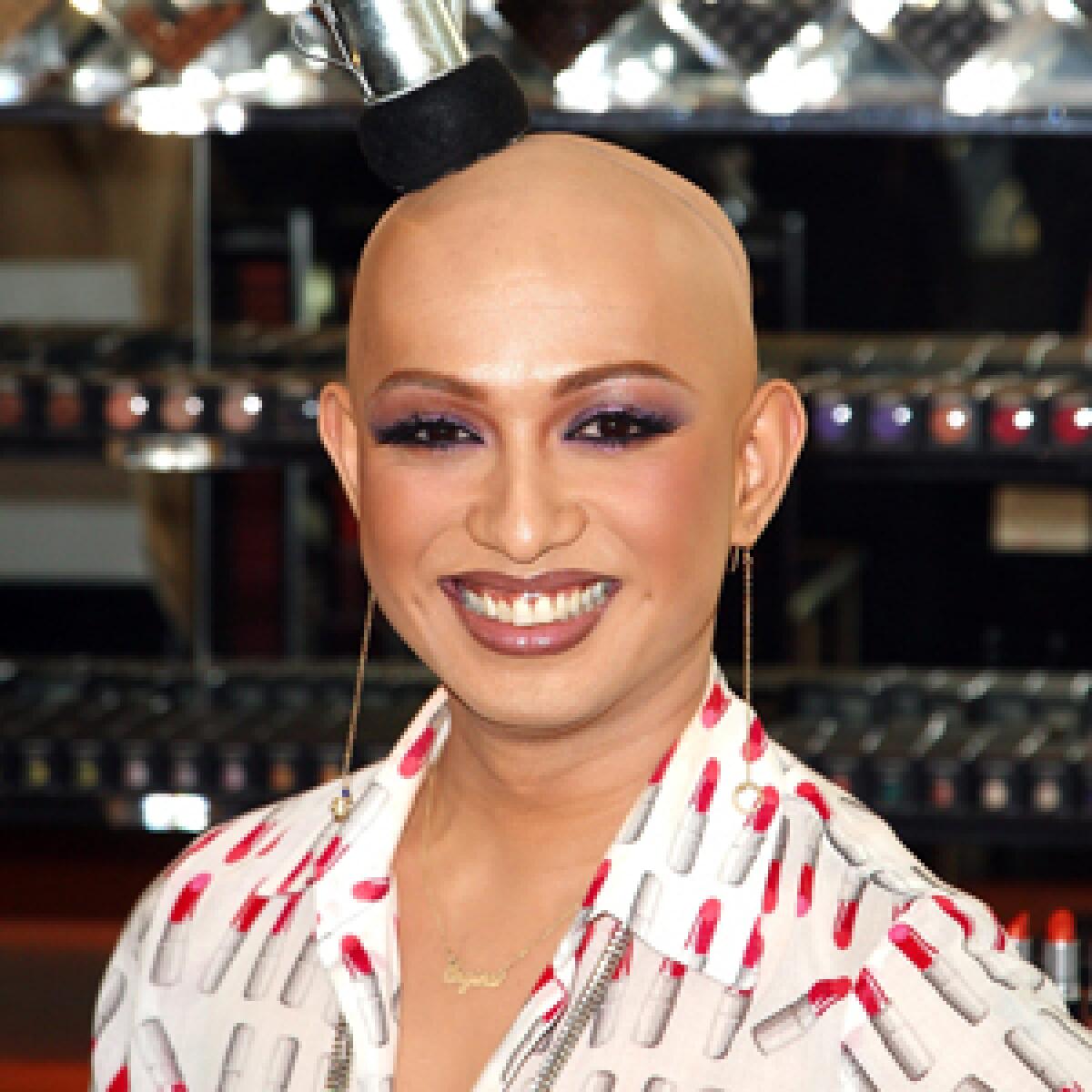Review: ‘RuPaul’s Drag Race’ on Logo

- Share via
RuPaul, the 6-foot-4 to 6-foot-7 (by his own varying accounts) African American drag queen who sashayed his way into mass consciousness in the 1990s with the club hit “Supermodel” and a VH1 talk show, is back on TV with “RuPaul’s Drag Race.” A reality competition show now about three-quarters through its first cycle on Logo, the LGBT-themed cable net, it aims to discover “America’s next drag superstar” -- that is, the next RuPaul. It’s a little bit “America’s Next Top Model” and a little bit “Project Runway,” and like drag itself, parodical without being a joke.
FOR THE RECORD:
“RuPaul’s Drag Race”: In Monday’s Calendar section, a photo caption with a TV review of “RuPaul’s Drag Race” misidentified show contestant Ongina as RuPaul. —
If it’s highly unlikely that a superstar, even a subcultural superstar, will emerge from a third-tier cable game show, or at least solely because of it, “Drag Race” has done very well by Logo standards and is scheduled to be rerun on VH1, its higher-profile, gender-neutral cousin under Viacom. (The series is also available on the network website.) Like its host(ess), who appears in drag and out of it, functioning as both (sharply dressed) Tim Gunn and voice of decision Heidi Klum -- now a mentor, now a judge -- the show is good-hearted and basically family friendly, adjusting for your family’s tolerance for sexual innuendo and risqué acronyms. Challenges have included “Drag on a Dime,” in which the contestants had to build a look from thrift store clothes; creating a girl group to lip sync to Destiny’s Child; channeling their inner Oprah; and dressing female martial arts experts as versions of their drag selves.
It’s clear from the range of styles, attitudes and ambitions on display that there’s nothing monolithic -- homogeneous, if you will -- about drag culture. Shanelle, a Las Vegas veteran, is all high-polished glitz; Tammie Brown, with her Bette Davis eyebrows and slathered-on lipstick, was like an echo of ‘70s-style downtown camp (and was soon eliminated). Nina Flowers, tattooed and muscular and made-up and bewigged like something not quite of this Earth, doesn’t “even consider myself a female impersonator,” while Rebecca Glasscock comes across mainly as a normally pretty girl. When the contestants were asked to do one another’s makeup, most were unhappy with the results.
Show business is, of course, all about dressing up and pretending, and drag is just a more particular version of the thing that all actors do. We’re long past the point where a man in a dress and lipstick is automatically funny or even remarkable. It is knit into the history of television, from Milton Berle’s Pleistocene Era cross-dressing, to Jim Bailey’s “Ed Sullivan”-compatible Judy Garland imitation, and from Monty Python’s “pepperpots” to “Little Britain,” where Matt Lucas incarnates a troublesome teenage girl and David Walliams’ terrible transvestite floridly announces, “I’m a lady . . . and because I’m a lady I like to do ladies’ things. . . . I press flowers and stroke kittens and swim in rivers wearing dresses and hats.”
And on the big screen: “Some Like It Hot,” “Tootsie,” “Victor/Victoria,” “Priscilla, Queen of the Desert.” These films are hardly underground, and all paint drag as in some way empowering and freeing, regardless of sexual orientation. Millions of people, of all ages, have seen “La Cage Aux Folles” and “Hairspray” on screen and onstage, without hastening the end of the world. Frank Marino, the self-described “longest-running headliner in Las Vegas,” imitates Joan Rivers, Britney Spears, Madonna and Cher at the Riviera Hotel -- and there is no place more fundamentally Middle American than Las Vegas.
Thomas Rogers argued recently in Salon that an aging audience, the disappearing gay bar and a less closeted, more socially integrated younger generation of gay men means that drag as an instrument of liberation may have seen its day. (Still, that drag queen Ryan Allen was voted homecoming queen at George Mason University this year seems a benchmark worth noting.) But for these contestants, the larger point is personal, the public solving of an essentially private equation. (Nina Flowers: “I like what I see, it doesn’t matter what anybody else has to say -- it doesn’t matter if the judges don’t like it . . . because I feel good about myself, and I love what I see.”) And for the rest of us, “Drag Race” is a useful reminder that masculinity and femininity are not absolute terms but a shaded series of possibilities strung between (relative) certainties.
If drag has indeed lost its shock value, well, shock value has lost its value anyway; it is just hot pepper for jaded palates nowadays. “Pink Flamingos” made Divine notorious, but “Hairspray” made him a star.
For all its crazy flamboyance, the big hair, the extreme makeup, the outrageous characters, the taping and tucking and stuffing and gluing, the cartwheels and the juggling -- yes, there is juggling -- this is an art whose true subject is dignity.
The humble production values of “Drag Race” might seem at odds with the fabulousness that drag reaches for, but it makes the performers look all the more human. There are trips and slips, someone falls, someone loses a wig, someone says for the first time that he’s HIV positive and collapses in tears. But they get up again. They finish the act.
More to Read
The complete guide to home viewing
Get Screen Gab for everything about the TV shows and streaming movies everyone’s talking about.
You may occasionally receive promotional content from the Los Angeles Times.







